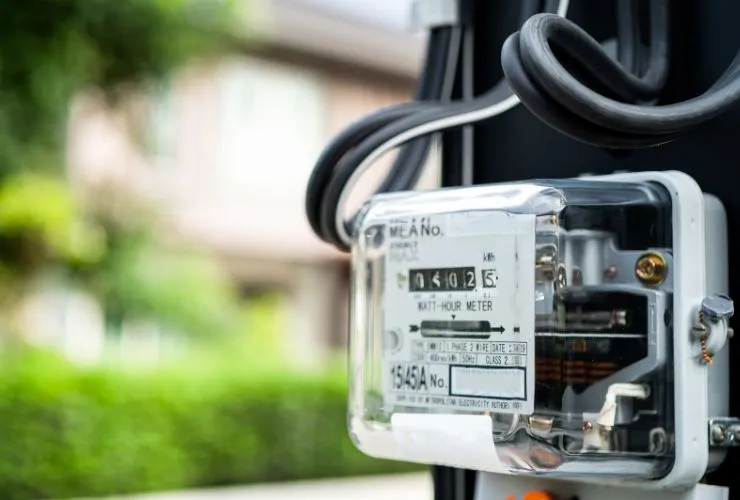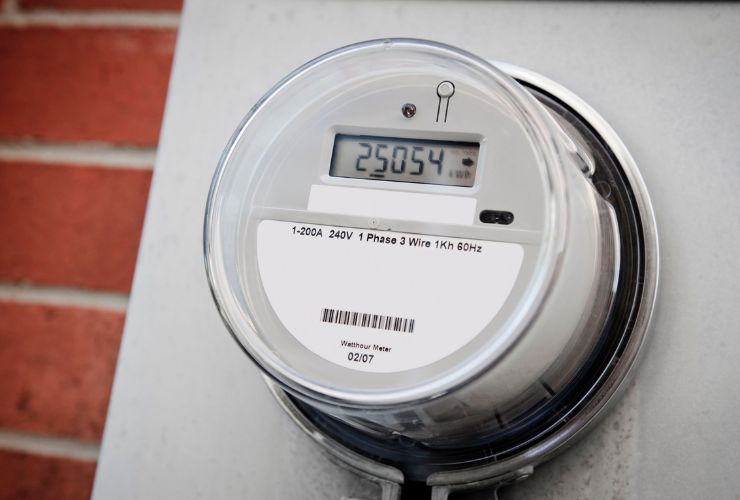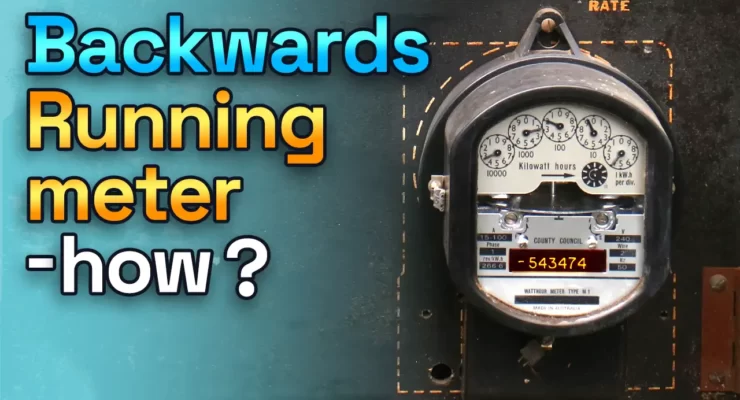Fast read
After installing solar panels, ensuring the replacement of old meters with modern bidirectional meters is crucial as old meters can run backwards when excess electricity is fed into the grid, inaccurately recording usage.
Electricity theft is when customers benefit from incorrect energy billing, which is considered illegal in many places such as Australia. This practice cheats on electricity companies.
The legality and the financial implications underline the importance of accurate metering and billing, promoting fairness and transparency in energy transactions.
Am I breaking the law if my electricity meter runs backwards after I had solar installed?
When installing solar in your home, there is usually a gap of several days or, in many cases, weeks between the solar system installation and the electricity retailer replacing the electricity meter. During this time, it is essential not to turn on the solar energy system and leave it running. If you do turn on the system, then your electricity meter will run backwards and record a credit.
Is this a problem if my electricity meter runs backwards?
When your solar PV system generates more electricity than your home is using, the excess energy is sent back to the grid. In Australia, as in many other places, the electricity meter can track this exported energy. In older metering setups, this process could literally cause the meter to run backwards, showing a reduction in the electricity usage count.
The history of electricity meters
The history of electricity metering goes back to the early days of electrification. Initially, meters were straightforward devices, solely designed to record the consumption of electricity within a premise.
These devices worked on basic mechanical principles. Electricity would make a disc spin and count how many times it rotates to show how much electricity was used. However, these early models lacked the foresight of homes generating their own electricity and sending it back to the grid.

Here’s a more detailed breakdown of how this works:
Solar generation
Your solar panels convert sunlight into electricity which can be used in your home.
Older mechanical meters
In the case of older, mechanical electricity meters, this process of exporting excess electricity to the grid could cause the meter to spin backwards.
When electricity flows in the opposite direction, the meter spins backwards. This means that if you send a lot of electricity back to the grid, the meter reading may be confusing. Your meter will show a lower number than before when the person reads it.
Electricity companies pay less for the electricity they purchase than for the electricity they sell. This is not beneficial for them.
Modern digital meters
New digital meters, also called smart meters or bidirectional meters, can measure electricity flow in both directions. They can record the flow of electricity to and from the grid.
These meters will monitor the electricity you use from the grid. They will also track the electricity you send back to the grid. However, they are not capable of running backwards.

Feed-in Tariff
The electricity that you send back to the grid can earn you credits on your electricity bill, through a scheme known as a Feed-in-Tariff.
Is the electricity meter running backwards illegal?
Having an electricity meter run backwards can be illegal in many places, including Australia. One main reason for this is that the meter can inaccurately measure energy usage and feed-in. This can lead to incorrect billing, often in favour of the customer. Naturally, the energy retailers do not like this at all.
Tracking electricity usage accurately is important. It is also important to track how much electricity is sent back to the grid. This ensures fair billing and compensation.
Activating the solar system helps households save money. They can earn credits by running the meter backwards. This happens at the same rate they pay for electricity. However, this practice costs the electricity company, as they would only pay their regulated rate or Feed-in Tariff for the electricity households send back.
So rather than saving the total rate of electricity of 30c, which is happening when the meter runs backwards, they should only be paying 5c per kWh. For example, that would be payable. As such, in the above example, you are actually “stealing” or defrauding the electricity company by allowing the meter to run backwards by 25c per kWh.
What do the energy retailers say?
Energy retailers believe that accurate measurement and proper billing are essential in the energy sector. This is because of legal requirements related to spinning meters. These requirements ensure that customers are billed correctly for the energy they use. In a way, it shows the rules that control energy deals and make sure the energy market is fair.”
Regulators and energy retailers can create a fair environment for everyone by accurately accounting for each kilowatt-hour of electricity. This legal stance is meant to protect the financial interests of energy retailers. It also aims to promote fairness and transparency in the energy market.
When you install a solar system, make sure to use a modern bidirectional meter. This meter can measure electricity flow accurately in both directions. This is important for monitoring the energy produced and consumed by your system. It helps ensure that you are maximizing the benefits of your solar panels.
If your old meter starts running backwards after installing solar panels, contact your solar installer or electricity provider. They can help fix the issue.
They may need to replace the old meter with a new digital or smart meter. This new meter can handle electricity flowing in both directions. The switch may happen soon.



